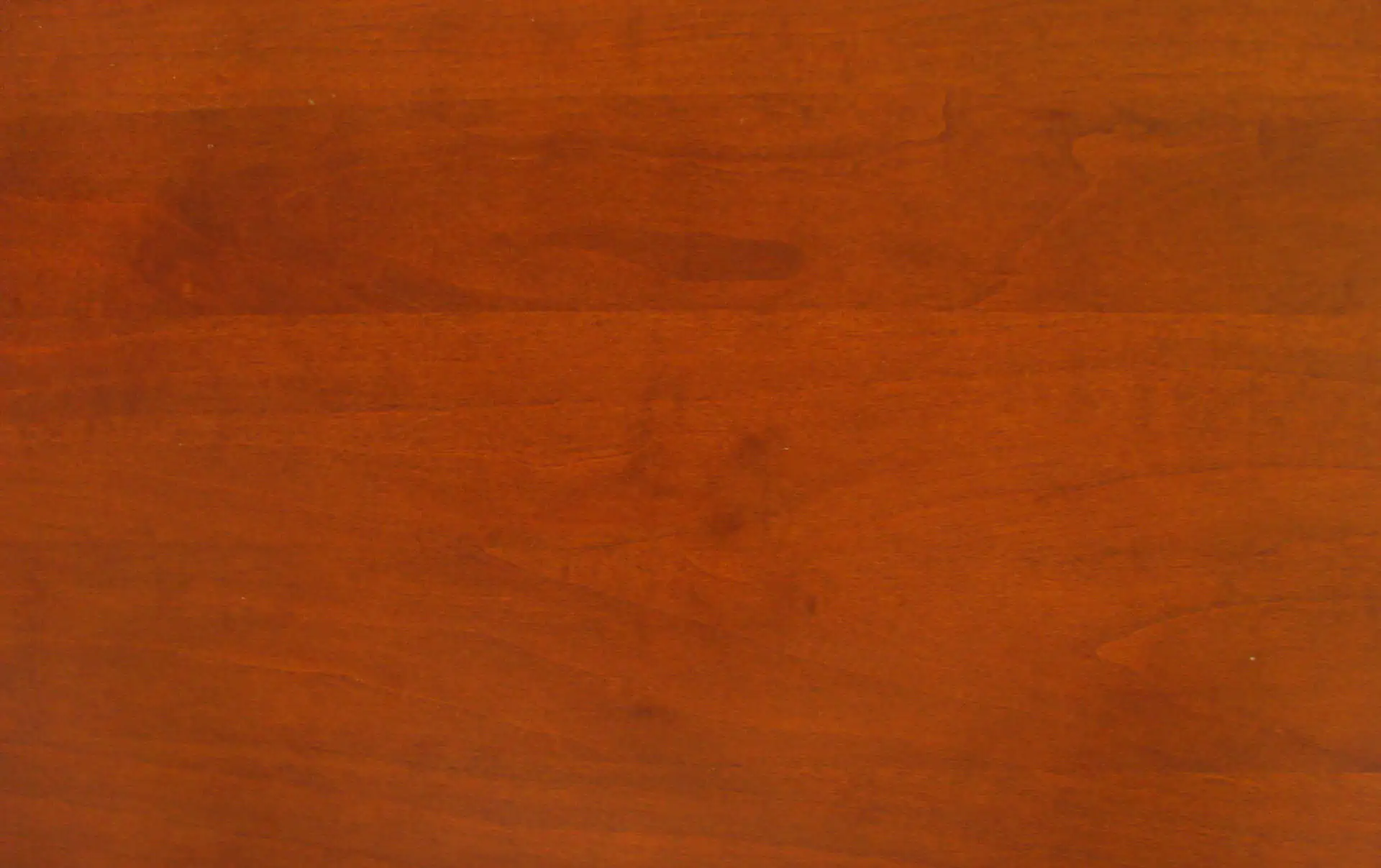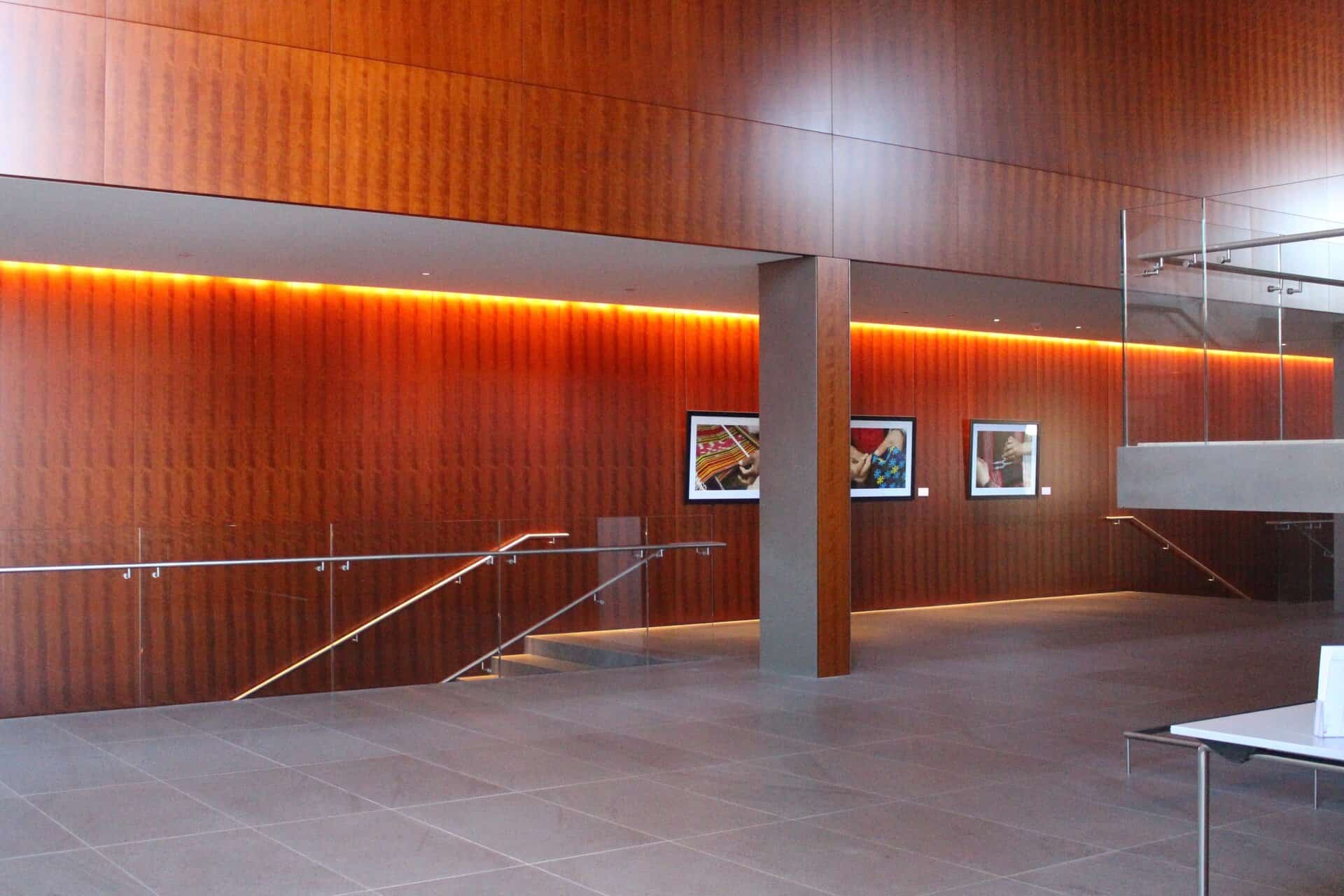Looking for a warm, welcoming hardwood with a subtle glow and fine, even grain? This guide explains what cherry wood is, how it looks and performs, and where it shines in modern homes, especially kitchens.
What Is Cherry Wood?
What Is Cherry Wood? Quick Definition & Origin
1. Cherry Wood Botanical Profile
Cherry wood most often refers to American black cherry (Prunus serotina), valued for its pink‑to‑red‑brown heartwood, fine texture and silky lustre. In Europe you’ll also see wild cherry (Prunus avium) used for furniture and joinery. Both are durable enough for interior use, machine beautifully and age to a rich amber tone.
2. European vs American Cherry Wood
European cherry typically starts a touch lighter with a delicate figure; American black cherry leans deeper in colour and slightly more uniform. Both may show small gum pockets or streaks, natural features that add character when finished clearly.

What Is Cherry Wood? Quick Definition & Origin
1. Cherry Wood Botanical Profile
Cherry wood most often refers to American black cherry (Prunus serotina), valued for its pink‑to‑red‑brown heartwood, fine texture and silky lustre. In Europe you’ll also see wild cherry (Prunus avium) used for furniture and joinery. Both are durable enough for interior use, machine beautifully and age to a rich amber tone.
2. European vs American Cherry Wood
European cherry typically starts a touch lighter with a delicate figure; American black cherry leans deeper in colour and slightly more uniform. Both may show small gum pockets or streaks, natural features that add character when finished clearly.


History of Cherry Wood
1. Traditional and Decorative Uses of Cherry Wood
From the 18th century onward, cherry became a cabinetmaker’s favourite for fine furniture, panelling, turned bowls and musical instruments. Its stability, satiny finish and gentle colour made it ideal for refined domestic interiors.
2. 20th Century to Now
Cherry’s popularity rose again with Shaker and mid‑century styles. Today, it’s chosen for kitchens and built‑ins where homeowners want warmth without heavy grain, because to most people, cherry wood is that soft, inviting glow that deepens beautifully over time.
History of Cherry Wood
1. Traditional and Decorative Uses of Cherry Wood
From the 18th century onward, cherry became a cabinetmaker’s favourite for fine furniture, panelling, turned bowls and musical instruments. Its stability, satiny finish and gentle colour made it ideal for refined domestic interiors.
2. 20th Century to Now
Cherry’s popularity rose again with Shaker and mid‑century styles. Today, it’s chosen for kitchens and built‑ins where homeowners want warmth without heavy grain, because to most people, cherry wood is that soft, inviting glow that deepens beautifully over time.
Characteristics & Performance of Cherry Wood
1. Grain, Colour & Grade of Cherry Wood
Freshly machined cherry ranges from light pinkish‑brown to warm red‑brown, with a fine, closed grain and natural sheen. It darkens appreciably with light, developing a mellow amber patina. Select grades offer calm, even colour; character grades display small knots, gum pockets and occasional ripple.
2. Strength, Hardness & Stability
On the Janka scale, American black cherry averages ~950 lbf—softer than oak but sturdy enough for kitchen worktops and furniture. It is dimensionally stable when seasoned and fitted correctly. As with any hardwood, allow for seasonal movement and maintain steady indoor humidity.
3. Workability & Finishing
Cherry machines and hand tools exceptionally well, holds crisp edges and glues reliably. Clear oils and hardwax finishes enhance its natural glow. If you plan to stain, use a conditioner or gel stain to minimise blotching on close‑grained areas, a common quirk of cherry wood.
Pros and Cons of Cherry Wood
Advantages of Cherry Wood
-
Warm, elegant colour that deepens attractively with age
-
Fine, even grain for a smooth, refined surface
-
Excellent machining and hand‑tool performance
-
Finishes beautifully with clear oil or hardwax
-
Works across styles: Shaker, modern, and classic
-
Naturally stable for built‑ins and detailed joinery
Disadvantages of Cherry Wood
-
Softer than oak or maple; can mark sooner in very high‑traffic areas
-
Pronounced colour change under strong light – use UV blinds where needed
-
Can blotch with traditional stains without a conditioner
-
Gum pockets or streaks may appear in character grades

Pros and Cons of Cherry Wood
Advantages of Cherry Wood
-
Warm, elegant colour that deepens attractively with age
-
Fine, even grain for a smooth, refined surface
-
Excellent machining and hand‑tool performance
-
Finishes beautifully with clear oil or hardwax
-
Works across styles: Shaker, modern, and classic
-
Naturally stable for built‑ins and detailed joinery
Disadvantages of Cherry Wood
-
Softer than oak or maple; can mark sooner in very high‑traffic areas
-
Pronounced colour change under strong light – use UV blinds where needed
-
Can blotch with traditional stains without a conditioner
-
Gum pockets or streaks may appear in character grades


Best Uses of Cherry Wood in the House
1. Cherry Wood for Kitchen Worktops
Cherry worktops bring a soft, amber warmth to painted and natural‑wood cabinets alike. Use continuous staves for a furniture‑grade look and apply extra coats of oil around sinks and hobs. It’s grain reads calm and cohesive across long runs.
2. Furniture, Flooring & Joinery
Beyond worktops, cherry wood is superb for dining tables, shelves, drawer boxes, stair parts and interior doors. On floors, it provides a gentle, welcoming tone; in cabinetry, it takes clean profiling and slim components with ease.
Best Uses of Cherry Wood in the House
1. Cherry Wood for Kitchen Worktops
Cherry worktops bring a soft, amber warmth to painted and natural‑wood cabinets alike. Use continuous staves for a furniture‑grade look and apply extra coats of oil around sinks and hobs. It’s grain reads calm and cohesive across long runs.
2. Furniture, Flooring & Joinery
Beyond worktops, cherry wood is superb for dining tables, shelves, drawer boxes, stair parts and interior doors. On floors, it provides a gentle, welcoming tone; in cabinetry, it takes clean profiling and slim components with ease.

Cherry Wood Care & FAQs
1. Is Cherry Durable for Busy Kitchens?
Yes. With correct installation, stable indoor humidity and periodic oiling, cherry stands up well to family life. Use chopping boards for knives and trivets for hot pans to keep the finish looking fresh.
2. How Do You Maintain a Cherry Worktop?
Oil generously before first use, then re‑oil more frequently in the first three months while the pores saturate. After that, top up when water stops beading or the surface appears dry. Wipe spills promptly and avoid standing water, especially near sinks and dishwashers.
3. Does Cherry Change Colour Over Time?
It does. Fresh cherry begins quite light and mellow to a deeper amber‑red with exposure to sunlight and air. Rotate worktop accessories during the first months so the colour evens out as it matures.
4. Is Cherry Sustainable and Available?
Cherry is widely available from responsibly managed North American and European forests. Look for FSC or PEFC certification and buy from reputable suppliers to ensure legal, traceable timber.
5. How Does Cherry Compare to Oak for Worktops?
Cherry offers a smoother, finer grain and a red‑amber palette; oak is a little harder with classic ray fleck and a golden tone. For a timeless alternative, many homeowners also explore oak worktops.
Why wait, order your Solid wood worktop today!
We know wood, and because of this, we are able to offer you an expansive collection of wood worktops and services, to suit any and all home projects.


